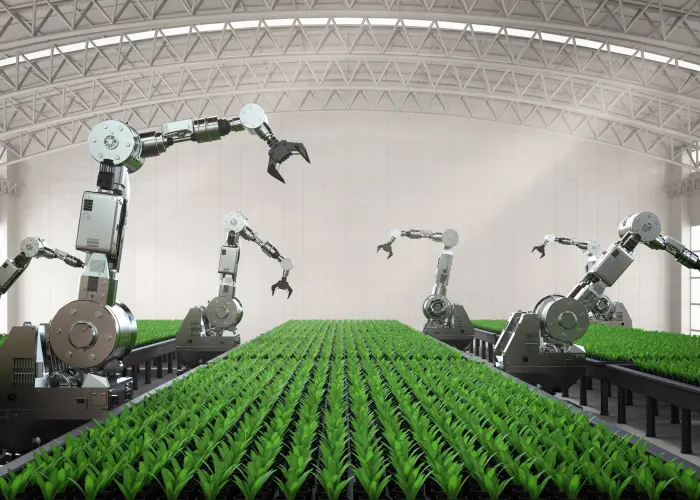
The Biological Clock and the Role of Fruits in Regulating It
Smart Vegetable Harvesting Innovation in China: The Future of Smart Agriculture
Major Transformations in Agriculture Through Smart Technology
In recent years, the agricultural industry has witnessed significant advancements in smart technology. With the growing global demand for food production and challenges such as labor shortages, high manual harvesting costs, and the urgent need to reduce agricultural waste, the development of advanced technologies has become essential.
Among the latest breakthroughs is the creation of intelligent harvesting robots by the Chinese company Zhongke Yuandongli, a development poised to revolutionize the industry.
Smart Harvesting Robots: A Game-Changer for Greenhouse Farming
These robots are specifically designed to harvest delicate and high-value crops such as greenhouse tomatoes and cherries with exceptional precision. Implementing such technology can boost farm productivity, reduce harvesting costs, and improve overall crop quality.
Unique Features of Smart Harvesting Robots
Equipped with state-of-the-art technology, these advanced robots enhance accuracy and efficiency in harvesting operations. Key capabilities include:
- Accurate Detection of Ripe Produce:
Leveraging image processing technology and machine learning algorithms, the robots can distinguish ripe produce from unripe ones and harvest with remarkable precision. This reduces waste and ensures high-quality end products. - Damage-Free Harvesting:
Their sophisticated mechanical arms are engineered to handle crops gently, minimizing damage and maintaining premium quality—especially crucial for sensitive fruits and vegetables. - High Efficiency in Greenhouse Environments:
Perfectly suited for controlled greenhouse settings, these robots deliver high-speed, high-accuracy performance without reliance on human labor. - Labor Cost Reduction:
By replacing manual labor, the robots significantly cut operational costs—an advantage particularly valuable in countries facing workforce shortages. - Increased Productivity and Resource Optimization:
By shortening harvest times and preventing premature or delayed picking, the robots help optimize water and soil usage while boosting farm output.
Impact of Smart Technology on the Future of Agriculture
Experts predict that smart harvesting robots will play a pivotal role in the future of agriculture. With the global population growing rapidly and food demand surging, automation could be a key driver in achieving food security.
Notable benefits for the industry include:
- Higher productivity and reduced operational costs
- Improved product quality and shelf life
- Lower consumption of natural resources, promoting environmental sustainability
- Reduced human labor requirements and better working conditions on farms
- New opportunities for the growth of smart and digital agriculture
Conclusion
As technology continues to advance, agriculture is entering a new era where smart robots and automated systems can enhance productivity while lowering production costs. The development of intelligent harvesting robots by companies such as Zhongke Yuandongli demonstrates the sector’s steady move toward a more sustainable and technology-driven future.
If these innovations are widely adopted, the coming years could see agricultural production becoming more efficient, cost-effective, and eco-friendly.
What do you think? Can smart harvesting robots fully replace human labor in agriculture? Share your thoughts with us.